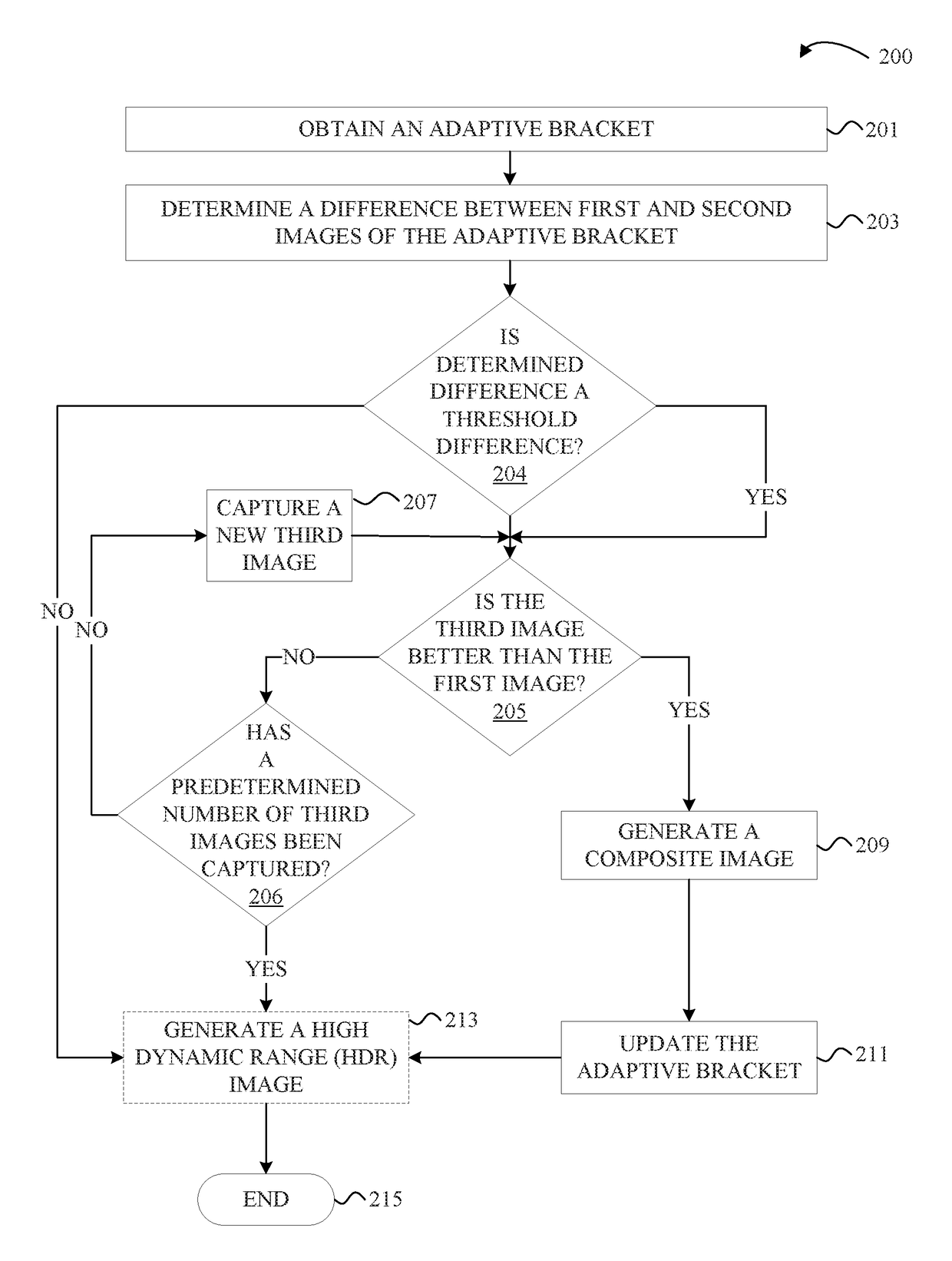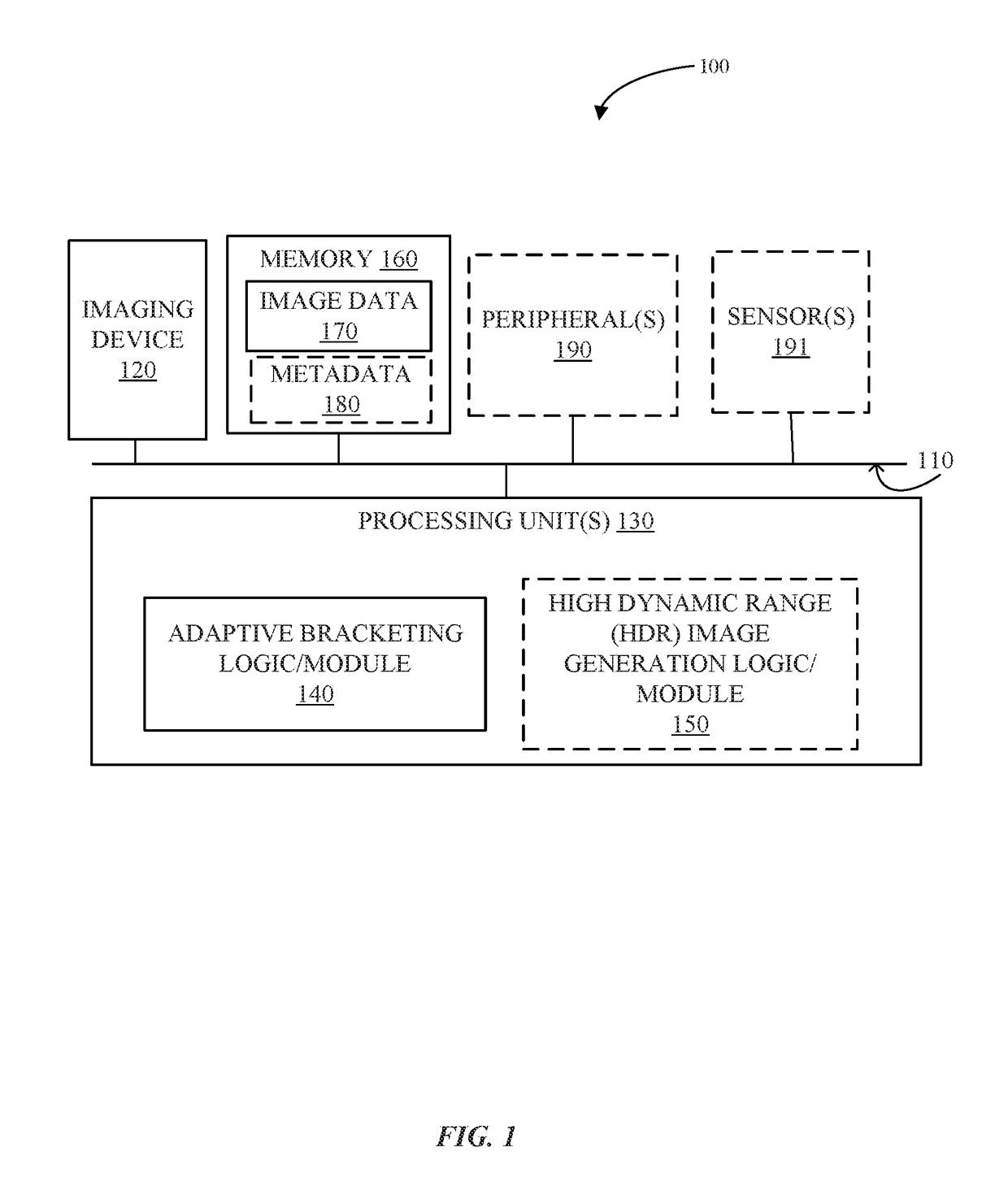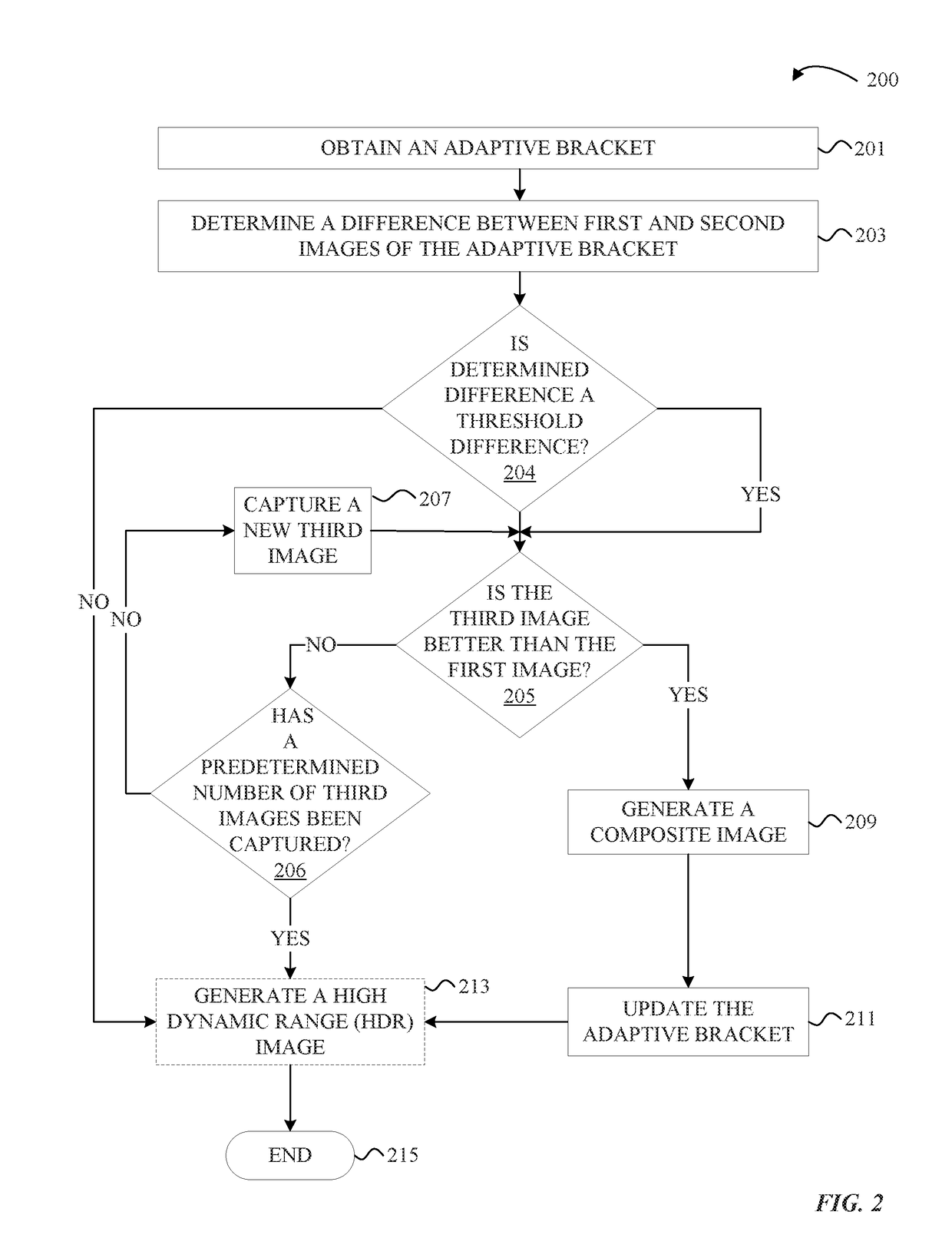Adaptive bracketing techniques
a bracketing technique and bracketing technology, applied in the field of digital image processing, can solve problems such as ghosting artifacts, and achieve the effect of reducing unwanted ghosting artifacts
- Summary
- Abstract
- Description
- Claims
- Application Information
AI Technical Summary
Benefits of technology
Problems solved by technology
Method used
Image
Examples
Embodiment Construction
[0025]Embodiments of methods, apparatuses, and systems for adaptive bracketing techniques are described. One or more of these embodiments can assist with reducing unwanted ghosting artifacts in a high dynamic range (“HDR”) image generated from an adaptively bracketed sequence of images (also referred to herein as an adaptive bracket).
[0026]Embodiments of the adaptive bracketing techniques set forth herein can assist with improving the functionality of computing devices or systems that generate HDR images. More specifically, computer functionality can be improved by enabling computing devices or systems that use an adaptive bracket for generating HDR images to reduce or eliminate the need to use de-ghosting algorithms on the generated HDR images. In this way, an adaptive bracket can assist with reducing or eliminating wasted computational resources (e.g., memory, processing power, computational time, etc.). For example, at least one embodiment of an adaptive bracket described herein ...
PUM
 Login to View More
Login to View More Abstract
Description
Claims
Application Information
 Login to View More
Login to View More - R&D
- Intellectual Property
- Life Sciences
- Materials
- Tech Scout
- Unparalleled Data Quality
- Higher Quality Content
- 60% Fewer Hallucinations
Browse by: Latest US Patents, China's latest patents, Technical Efficacy Thesaurus, Application Domain, Technology Topic, Popular Technical Reports.
© 2025 PatSnap. All rights reserved.Legal|Privacy policy|Modern Slavery Act Transparency Statement|Sitemap|About US| Contact US: help@patsnap.com



